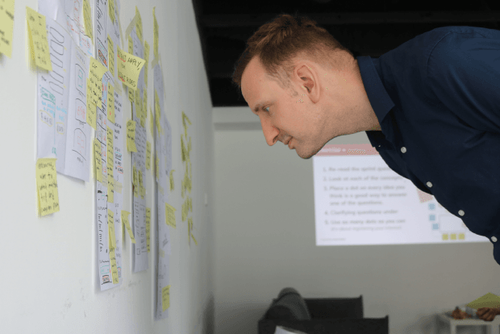App Maintenance & Scalability: Differences & Goals
Get the latest updates about our blog posts.
Subscribe so you don’t miss out!
Follow Lizard Global on Facebook, Instagram, and LinkedIn.
The symbiotic relationship between app maintenance and scalability plays a pivotal role in ensuring the sustained success of applications. App maintenance, the vigilant caretaker, focuses on the ongoing tasks required to preserve an application's stability and functionality. On the other hand, app scalability, the visionary architect, is concerned with preparing the application for growth, enabling it to handle increased user demand and data volumes. Together, they form the backbone of a resilient and thriving software ecosystem.
But what are their differences? Are app maintenance and scalability the same? This blog explores the definitions, differences, and shared goals of app maintenance and scalability, explaining how a harmonious balance between the two is crucial for the long-term success of any mobile or web application.
What is App Maintenance?
App maintenance is the ongoing process of managing and preserving the functionality and integrity of a software application throughout its lifecycle. It involves a series of proactive measures and reactive responses to ensure that the software continues to meet its intended purpose and remains compatible with the evolving technological landscape. Activities involved in App Maintenance, include:
1. Bug fixes and patches
The identification and resolution of software bugs are fundamental to app maintenance. Regular debugging activities address issues that may hinder the application's performance or user experience. Patches, often released as updates, deliver targeted fixes to specific problems, ensuring a seamless and bug-free operation.
2. Security updates
App maintenance includes the implementation of measures to counter emerging threats, patch vulnerabilities, and safeguard user data. Timely security updates are mostly important, especially in maintaining the trust and confidence of users in the application.
3. Compatibility adjustments
With the coming of new devices, operating systems, and software versions, ensuring your app is compatible with the newer versions plays a big percentage of your app's success. This involves making adjustments to ensure that the application remains compatible with the latest technologies through optimizing code, updating dependencies, or adapting the user interface to new platforms.
What is App Scalability?
App scalability is the capacity of a software application to gracefully handle increased demand, user growth, or data volume while maintaining or enhancing performance. It is considered a crucial aspect of software architecture as it anticipates and accommodates the evolving needs of the user base. Activities involved in App Scalability include:
1. Architectural optimizations
Scaling an application often starts with optimizing its architecture. This involves designing the software in a way that allows it to efficiently distribute and handle resources. Architectural optimizations may include the use of microservices, load balancing, and the adoption of scalable design patterns to ensure the application can seamlessly handle a growing number of users and transactions.
2. Database scaling strategies
As an application grows, so does the volume of data it manages. Database scaling strategies involve optimizing database performance to handle increased data loads. This may include sharding, replication, or adopting NoSQL databases to distribute and manage data more effectively.
3. Infrastructure adjustments
Scalability is closely tied to the underlying infrastructure. Infrastructure adjustments involve scaling resources, such as servers and storage, to meet the demands of a growing user base. This may include vertical scaling by upgrading existing servers for increased capacity or horizontal scaling by adding more servers to distribute the workload efficiently; the best example is Cloud services.
🧐 How much does it cost to build an app in 2024? Curiosity doesn’t kill the cat, so get a budget estimation with our App Cost Estimator. Totally FREE! Click, calculate, and get ready for the appventure of a lifetime.
Differences between App Maintenance and Scalability
App maintenance and scalability differ in their focus and objectives. Maintenance revolves around the day-to-day care and immediate needs of the application, addressing bugs, ensuring security, and adapting to changing environments. On the other hand, scalability is a forward-looking strategy concerned with preparing the application for growth, emphasizing optimization of architecture, databases, and infrastructure to handle increased demand and user volume.
Short-term preservation vs. long-term growth
The primary distinction lies in the time horizon of their objectives. App maintenance is inherently short-term, concentrating on the present stability and functionality of the application. It involves immediate responses to issues to keep the software in optimal condition such as addressing bugs, optimizing performance, and ensuring security through maintenance activities creating a robust base upon which scalability measures can be implemented more effectively.
Conversely, app scalability is a long-term endeavor, anticipating that the application can continue to function optimally as it attracts more users and experiences increased demands. This requires future-proofing the application through ongoing maintenance to address new challenges and ensure it can grow and evolve without compromising performance.
Ultimately, while maintenance and scalability have different time horizons and focuses, they are complementary forces in the software development lifecycle; a well-maintained application provides a stable foundation for scalability efforts.
Strategies for balancing App Maintenance and Scalability
Here are strategic approaches for striking the right balance:
1. Prioritize critical maintenance tasks
This task involves a careful assessment of immediate challenges that could impact the application's stability and security. Addressing high-priority items first ensures that the application remains resilient to potential threats and user experience issues. Through this focus, the development team can reduce the risk of unforeseen complications during periods of growth.
2. Iterative development with Scalability in mind
Instead of treating scalability as an isolated concern, it is best to integrate it into the development process. This allows for the gradual implementation of scalability measures, preventing scalability challenges from becoming insurmountable obstacles later on while promoting a proactive mindset to align development parallel to the long-term goals of scalability.
3. Regularly review and update Scalability plans
Scalability plans should be viewed as dynamic documents that evolve alongside the application. Regular reviews and updates ensure that scalability strategies remain aligned with the changing user demands and technological advancements. In this process, development teams can identify potential bottlenecks or areas for improvement and immediately enable them to stay ahead of scalability challenges and make informed decisions, especially when deciding on resource allocation and infrastructure enhancements.
How do you ensure the long-term success of your app?
Lizard Global stands as a reliable partner. As a full-stack web and mobile application developer, Lizard Global brings a wealth of experience to the table, with 10 years of success in the industry and over 100 projects in 25 locations spread across the world. Whether you're embarking on creating a new app or refining an existing one, Lizard Global's expertise encompasses the entire spectrum of development, from robust initial designs to seamless scalability strategies. Imagine, design, create, and grow with us!
Trust Lizard Global to transform your vision into a technologically robust and continuously evolving application that maximizes your potential for monetization and user satisfaction. Reach out to us today and we'll get started with a FREE digital roadmap presentation for your app.

👀 How much does it cost to build an app in 2024? Let's crunch numbers together!
We get it, pricing can be a puzzler. But fear not! Our App Cost Estimator tool is here to sprinkle a bit of magic on your budgeting journey. It's as easy as picking your features and voilà—your app investment laid out in front of you. Click, calculate, and get ready for the appventure of a lifetime.
Want to find out how much it costs to build your dream app or web app?




